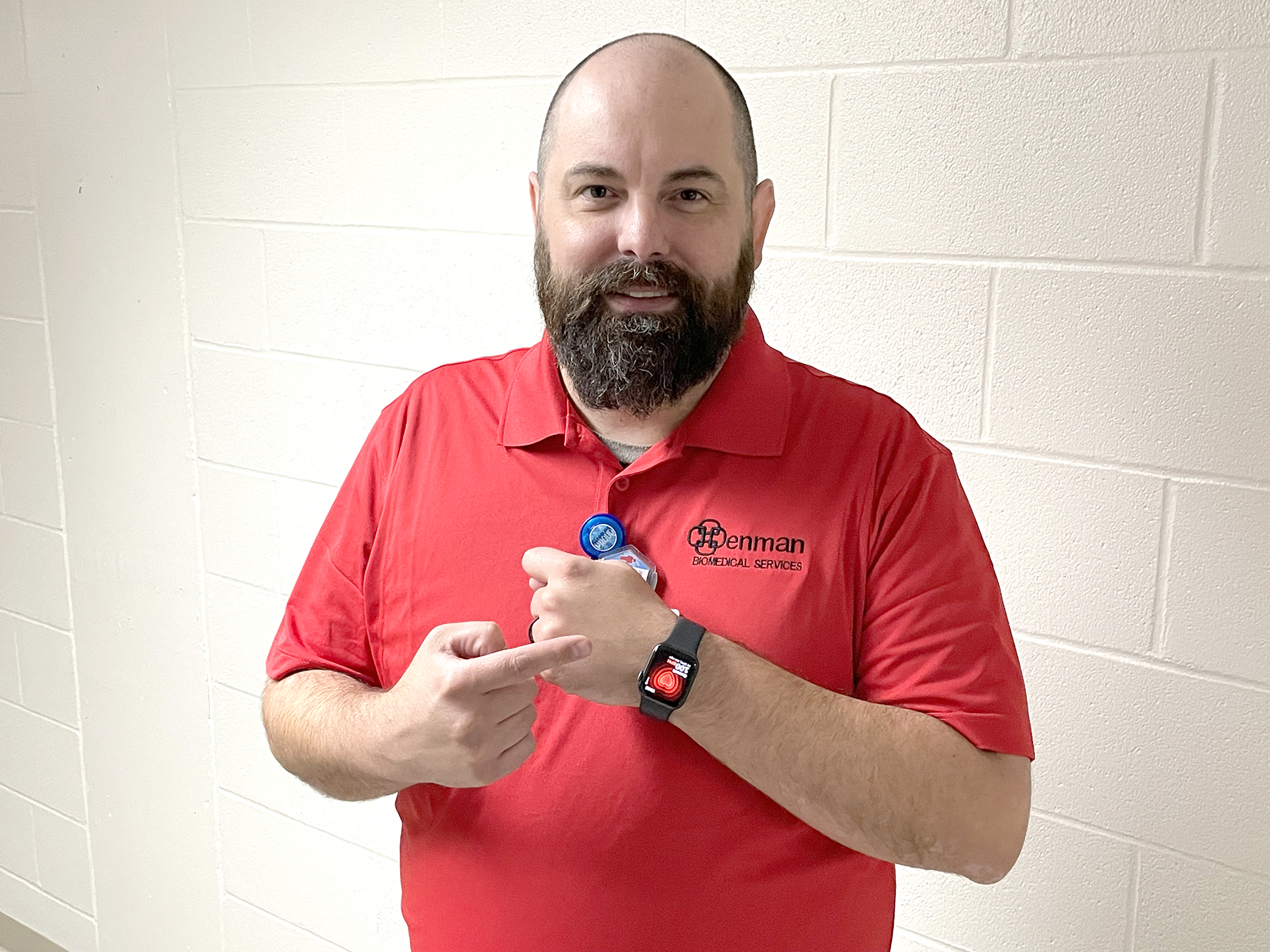You’ve heard the old saying, “An apple a day keeps the doctor away”? Rather than keeping him away, James Eyster’s high tech “Apple” brought him to the doctor and may well have saved his life.

One night in March, James went to bed to rest up for work the next day in his role as biomed technician with Denman Services.
“I woke up around midnight or 1 am. I felt like I was getting a sore throat,” he said.
James went back to sleep for a few more hours. Upon awaking at 5 am, his throat was worse. He checked his temperature. It was normal. So, James went to work.
“As the day progressed, things got worse. I felt like I might have strep throat.”
A visit to the Walk-In Clinic resulted in a positive strep test. James was very tired and went home to take a nap while he waited for the text that would tell him his antibiotic prescription was ready for pick-up at the pharmacy.
Here’s the Apple part of this story
“I kept getting awakened by my Apple watch, kind of like I set an alarm, but I had not,” James said. “My watch was telling me my heart rate was high and I am thinking, ‘Quit waking me up. I am trying to rest.”
Still convinced he had strep throat and side effects of not eating all day because his throat hurt, James got the message about the fourth time his watch went off. He realized that he was also not thinking as clearly as he normally did.
“It progressed pretty quickly,” he said.
Unable to contact his wife because she was working, James called his mother to take him to the Emergency Center as he was too tired, dizzy and incoherent to drive.
James, husband and father of a 14-month-old, got the shock of his life when he found out he had sepsis. If not treated quickly, sepsis can be fatal.
What is sepsis?
Sepsis is the body’s overwhelming response to infection. It can lead to tissue damage, organ failure, amputations and death. Sepsis kills 350,000 people each year in the U.S., 1 every 2 minutes.
To remember the symptoms of sepsis, think of the word TIME:
T = Temperature. Higher or lower than normal.
I = Infection. May have signs and symptoms of an infection.
M = Mental decline. Confused, sleepy, difficult to wake.
E = Extremely ill. Severe pain, discomfort, shortness of breath.
Sepsis is sneaky because it may appear as a common infection or other medical condition, like strep throat as it did in James.
“I had not put my symptoms together,” James said. “I am not a caregiver.”
He is not alone. Too often times, a person becomes very sick due to sepsis and by the time the illness is diagnosed, it can be too late for effective treatment. Every hour treatment is delayed, the risk of death increases by 8 percent. Death can occur in as few as 12 hours.
How James beat the odds
Fortunately for James, he received his care at Blessing Hospital. Blessing Health developed and uses a sepsis surveillance program that helps caregivers identify sepsis as early as possible. The program features sepsis-specific training for bedside caregivers supported by the latest patient monitoring technology.
Laura Weigand, BSN, RN, CCRN, TNS, Quality and Performance Improvement, was a driving force behind the sepsis surveillance system and treatment protocol at Blessing Health. Her late husband, Travis, was hospitalized with sepsis for nearly two months in 2016 and suffered two amputations because of the effects of the disease.
“They knew what to look for and recognized it immediately,” James said of the Emergency Center care team.
James was admitted to the hospital, received treatment and released the next day.
“I was feeling really good. If I had waited another day, or until my wife got home for work, who knows what could have happened?”
As a result of getting the right diagnosis and treatment at the right time, with credit to his Apple watch, too, James beat the odds.
For more information on sepsis go to https://www.blessinghealth.org/sepsis
